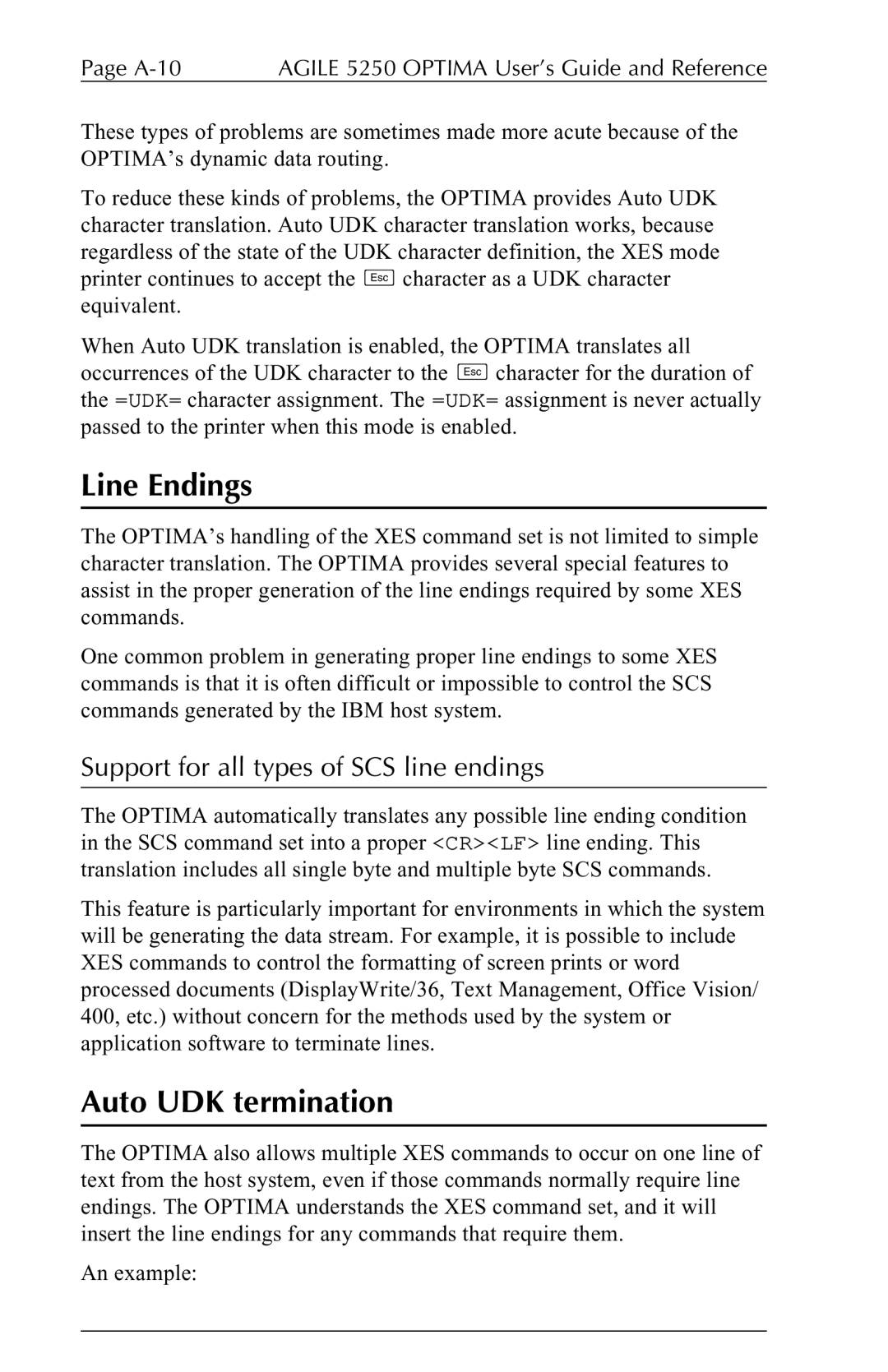
Page | AGILE 5250 OPTIMA User’s Guide and Reference |
These types of problems are sometimes made more acute because of the OPTIMA’s dynamic data routing.
To reduce these kinds of problems, the OPTIMA provides Auto UDK character translation. Auto UDK character translation works, because regardless of the state of the UDK character definition, the XES mode printer continues to accept the s character as a UDK character equivalent.
When Auto UDK translation is enabled, the OPTIMA translates all occurrences of the UDK character to the s character for the duration of the =UDK= character assignment. The =UDK= assignment is never actually passed to the printer when this mode is enabled.
Line Endings
The OPTIMA’s handling of the XES command set is not limited to simple character translation. The OPTIMA provides several special features to assist in the proper generation of the line endings required by some XES commands.
One common problem in generating proper line endings to some XES commands is that it is often difficult or impossible to control the SCS commands generated by the IBM host system.
Support for all types of SCS line endings
The OPTIMA automatically translates any possible line ending condition in the SCS command set into a proper <CR><LF> line ending. This translation includes all single byte and multiple byte SCS commands.
This feature is particularly important for environments in which the system will be generating the data stream. For example, it is possible to include XES commands to control the formatting of screen prints or word processed documents (DisplayWrite/36, Text Management, Office Vision/ 400, etc.) without concern for the methods used by the system or application software to terminate lines.
Auto UDK termination
The OPTIMA also allows multiple XES commands to occur on one line of text from the host system, even if those commands normally require line endings. The OPTIMA understands the XES command set, and it will insert the line endings for any commands that require them.
An example:
